
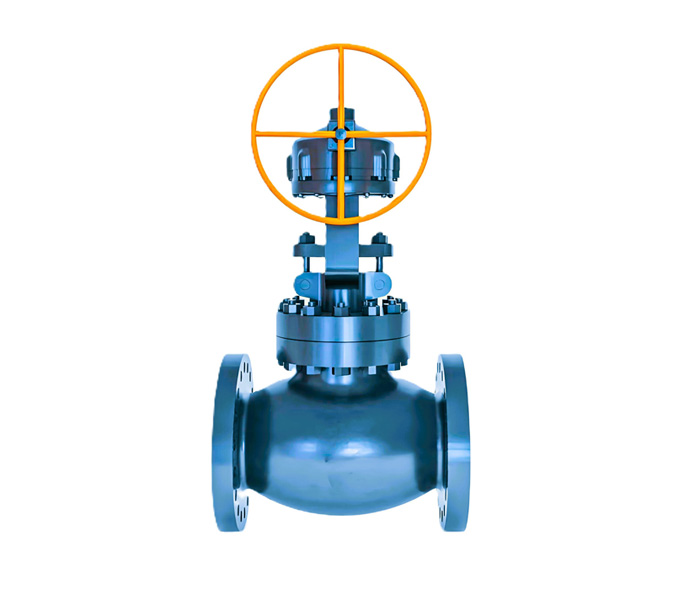
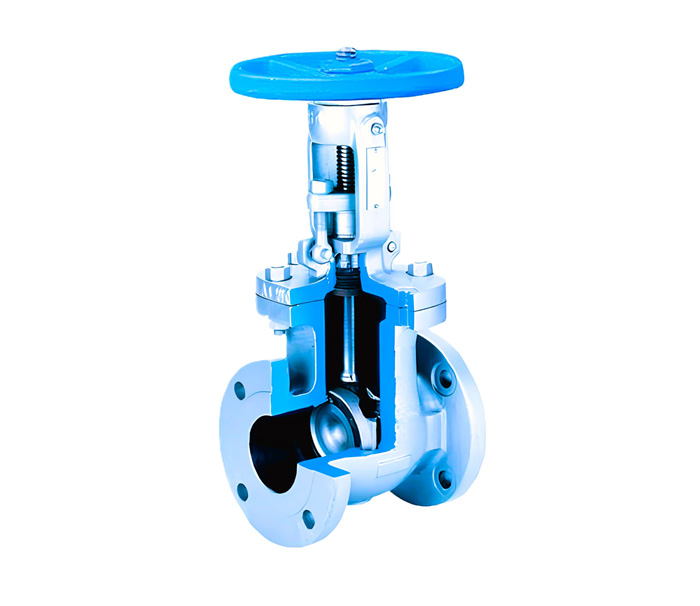
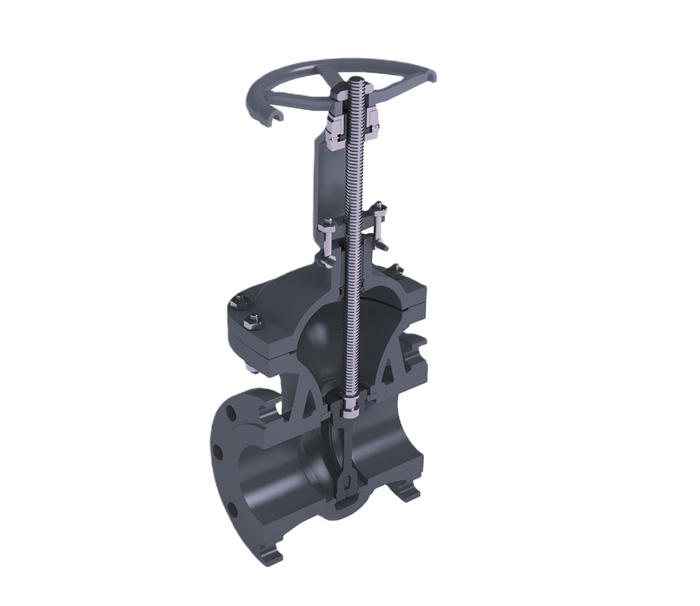
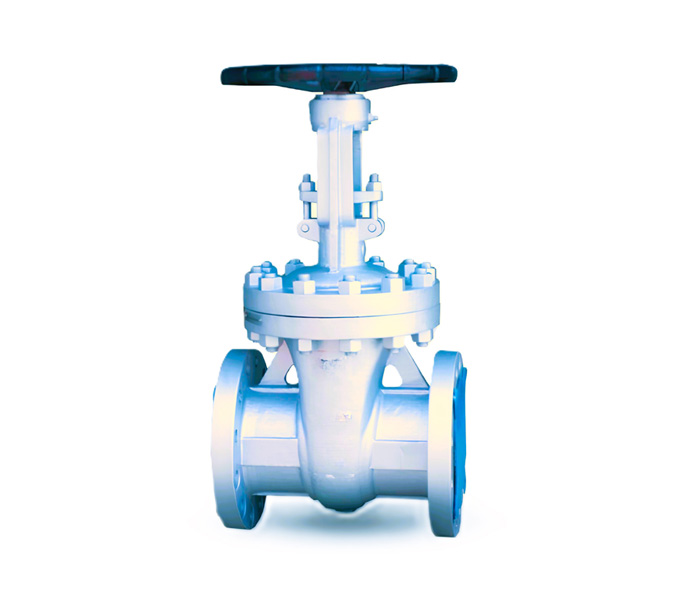
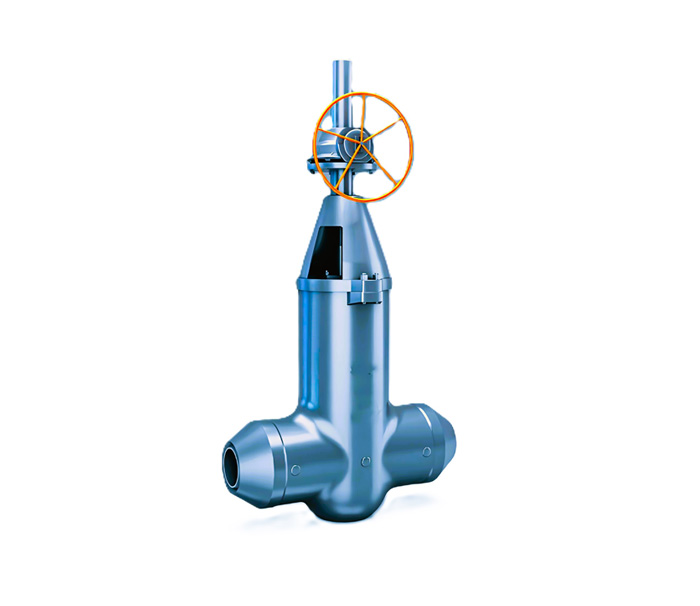
What is Gate Valve?
A gate valve is a type of valve that is designed to control the flow of fluid by either fully opening or fully closing the passage within the valve. It is named for the gate-like barrier or disc that moves up and down to control the flow. Gate valves are commonly used in various industries and applications where a straight-line flow of fluid and minimal flow restriction are required.
Arrotop Gate Valves offer high performance, reliability, and versatility for various industrial applications. With a focus on quality and innovation, Arrotop provides products that ensure superior performance and longevity. For more details or to place an order, contact our sales team.
Product Data
Arrotop is a reliable manufacturer and supplier of Gate Valves in India, delivering reliable flow control solutions for a wide range of industrial applications. Designed for full open or full close operation, Arrotop’s gate valves provide minimal flow restriction when open, ensuring efficient fluid movement in systems handling water, oil, gas, and other process media.
Gate valves are primarily used to start or stop the flow of fluids, especially where straight-line flow with minimal pressure drop is required. They are not intended for throttling but rather for on/off service, making them ideal for isolation duties. With a simple, robust design, gate valves are commonly operated in either fully open or fully closed positions, offering dependable performance and durability in demanding environments.
In a Gate valve, the disk is entirely removed when the valve is fully open, and it is fully drawn up into the valve bonnet. This action creates an opening for fluid flow through the valve that matches the inside diameter of the pipe system in which the valve is installed. Gate valves are versatile and can be employed for a broad range of liquids. When closed, they provide a tight seal, ensuring effective isolation and preventing the passage of fluids.
Gate valves are composed of three primary components: the body, bonnet, and trim. The body is typically linked to other equipment through flanged, screwed, or welded connections. The bonnet, housing the moving parts, is affixed to the body using bolts, facilitating maintenance. The valve trim encompasses the stem, gate, disc or wedge, and seat rings.
Features :
- Design: Flat closure element (gate) that slides into the flow stream.
- Operation: Available in manual, gear, or actuator-operated configurations.
- Applications: Ideal for use in water treatment plants, oil refineries, gas processing facilities, and more.
- Durability: Constructed from high-quality materials for long-lasting performance.
- Sealing: Designed to provide tight sealing with minimal leakage.
- Low Pressure Drop: Ensures minimal resistance to flow when fully open, making it efficient for high flow applications.
- Bi-Directional Flow: Capable of handling flow in both directions for versatile use.
- Full Port Design: Provides unobstructed flow path for efficient fluid handling.
- Anti-Corrosion Coating: Available with anti-corrosion coatings for enhanced durability in harsh environments.
- High Flow Capacity: Engineered to provide high flow capacity with minimal pressure drop.
- Maintenance: Designed for easy maintenance with replaceable parts.
- Leak-Proof Design: Ensures leak-proof operation under high pressure.
- Low Operating Torque: Requires less force to operate, reducing wear and tear.
- Fire-Safe Design: Designed to maintain integrity and prevent leakage in case of fire.
- Cryogenic Service: Suitable for extremely low-temperature applications.
Technical Specifications :
- Sizes: From 1/2″ to 24″ (DN 15 to DN 600)
- Materials: Carbon steel, stainless steel (SS304, SS316), duplex steel, and special alloys
- Temperature Range: -29°C to 815°C
- End Connections: Flanged, butt-weld, threaded, and socket-weld
Standards and Compliance
- Design and Manufacturing: API 600, API 6D, ASME B16.34
- Face-to-Face Dimensions: ASME B16.10
- End Connections: Flanged (ASME B16.5), butt-weld (ASME B16.25), threaded, and socket-weld
Construction Details
- Body and Bonnet: Cast or forged construction with bolted or pressure seal bonnet
- Stem: Stainless steel for corrosion resistance
- Seats: Available in integral or renewable designs
- Gland: Adjustable gland for enhanced sealing
- Gate: Flexible or solid gate options for different applications
- Packing: High-quality packing to prevent leakage
- Yoke: Robust yoke design for actuator mounting and smooth operation
Dimensional Data
| Model Number | Size (in) | Class 150 (mm) | Class 300 (mm) | Class 600 (mm) | Class 900 (mm) | Class 1500 (mm) | Class 2500 (mm) |
|---|---|---|---|---|---|---|---|
| AR-GV-150-01 | 1/2″ | 108 | 140 | 152 | 165 | 216 | 292 |
| AR-GV-150-02 | 1″ | 127 | 178 | 191 | 203 | 229 | 305 |
| AR-GV-300-03 | 2″ | 152 | 216 | 241 | 292 | 368 | 368 |
| AR-GV-600-04 | 4″ | 203 | 229 | 292 | 356 | 419 | 508 |
| AR-GV-900-05 | 6″ | 267 | 279 | 356 | 406 | 470 | 559 |
| AR-GV-1500-06 | 8″ | 292 | 343 | 381 | 495 | 559 | 635 |
| AR-GV-2500-07 | 10″ | 330 | 406 | 457 | 622 | 660 | 787 |
| AR-GV-150-08 | 12″ | 356 | 483 | 502 | 711 | 787 | 838 |
| AR-GV-300-09 | 14″ | 381 | 533 | 762 | 838 | 838 | 889 |
| AR-GV-600-10 | 16″ | 406 | 597 | 838 | 864 | 864 | 991 |
| AR-GV-900-11 | 18″ | 432 | 635 | 914 | 978 | 978 | 1092 |
| AR-GV-1500-12 | 20″ | 457 | 698 | 991 | 1029 | 1029 | 1194 |
| AR-GV-2500-13 | 24″ | 508 | 813 | 1143 | 1200 | 1200 | 1397 |
Applications of Gate Valve
- Water Supply Systems: Gate valves are commonly used in water supply systems to control the flow of water in pipelines. Their ability to provide full opening and closing allows for effective control of water distribution.
- Wastewater Treatment Plants: Gate valves are employed in wastewater treatment plants to regulate the flow of sewage and other fluids through different stages of the treatment process.
- Oil and Gas Industry: Gate valves are used in the oil and gas sector for controlling the flow of crude oil, natural gas, and other hydrocarbons in pipelines and processing facilities.
- Power Plants: Gate valves play a crucial role in power plants, particularly in steam systems. They are used to control the flow of high-temperature steam in boiler feedwater systems and other power generation processes.
- Chemical Processing: In chemical plants, gate valves are utilized to control the flow of various chemicals and fluids in processing units, ensuring precise control over the production process.
- Shipbuilding and Marine Applications: Gate valves find applications in shipbuilding and marine systems, where they are used to control the flow of liquids in various components, including ballast systems and cooling systems.
- HVAC Systems: Gate valves are employed in heating, ventilation, and air conditioning (HVAC) systems to control the flow of air, water, or refrigerant within buildings.
- Fire Protection Systems: Gate valves are used in fire protection systems to control the flow of water to fire hydrants, sprinklers, and other firefighting equipment.
- Petrochemical Plants: Gate valves are common in petrochemical facilities for controlling the flow of various chemicals and hydrocarbons in processing units.
- Mining Industry: In mining operations, gate valves are used to control the flow of slurries, water, and other fluids in the extraction and processing of minerals.
- Paper and Pulp Industry: Gate valves are employed in paper and pulp manufacturing processes to control the flow of liquids and chemicals in different stages of production.
Advantages of Gate Valve
- Full Flow Passage: Gate valves provide a straight-line flow path when fully open, minimizing flow restrictions. This design allows for maximum flow capacity, making gate valves suitable for applications where minimal pressure drop is crucial.
- Quick Operation: Gate valves are designed for quick and easy operation. The gate can be fully raised or lowered with a simple turn of the valve handle or actuator, enabling fast on/off control.
- Tight Shutoff: Gate valves provide a tight seal when fully closed, preventing the passage of fluids. This characteristic is essential in applications where leakage or seepage is not acceptable.
- Versatility in Applications: Gate valves are versatile and can handle a variety of fluids, including liquids and gases. They find applications in industries such as oil and gas, water treatment, chemical processing, and more.
- Bi-Directional Flow: Gate valves typically allow for bidirectional flow, meaning they can control the flow of fluid in both directions. This feature enhances their versatility in various piping systems.
- Suitable for High-Temperature Applications: Gate valves are often suitable for high-temperature applications, such as in steam systems or industrial processes involving elevated temperatures.
- Minimal Pressure Loss: When fully open, gate valves introduce minimal resistance to flow, resulting in low pressure loss. This characteristic is advantageous in systems where maintaining high efficiency is crucial.
- Low Maintenance: Gate valves are relatively simple in design, and their components are often easily accessible. This simplicity contributes to ease of maintenance, making them a practical choice in various industrial settings.
